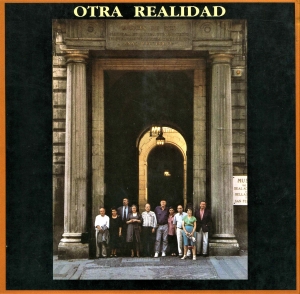Another Reality. Partners in Madrid-Javier Tussell (1992)
OTHER REALITY. COLLEAGUES IN MADRID-JAVIER TUSSELL (1992)
Exhibitions organised by the Marcelino Botín Foundation in Santander, Madrid and Zaragoza
Enrique Gran also broke with realism around 1958. Before this date he had cultivated the figure, but also, above all, the landscape; his painting immediately prior to this turn had very little to do with the influence of Italian art, which was common in the group, but rather he practised, like Lucio Muñoz, a post-cubism with already abstract edges whose theme and atmosphere had not little to do with the landscape of his native Santander (the catalogue of his 1959 exhibition had a prologue by Pancho Cossío). From that moment on his paintings, rich in material density, concentrate the spectator’s attention on a kind of central motif that could be a telluric explosion on the background of a phantasmagoric scene in which there is the memory of a mysterious landscape, probably a sea, of faded contours from a chromatism in which blues, greens, ochres and blacks predominate during the sixties and seventies. Some terms have been used to describe it that allude to the landscape of Santander and, therefore, to a grip on reality: we admire those panoramas of immense sea, on whose shores stand shells of a thousand colours, shells of unimaginable depths, meandering in lively colours. These centres of gravity of his paintings may well be rocks surrounded by foam or biological or mineral detritus in the immensity of the beach. In any case, his painting refers to an invented figuration, but it is always attached to reality and, as time goes by, this becomes more and more evident. Her passion for matter, tormented and opulent, which is itself an expression of drama, coincides with that of other members of the group. That matter and that landscape phantasmagoria is also expressive of states of mind or mood. The surreal mood of her paintings, populated with mythical beings, is a surrealism with an immediate relationship in comics and a more remote one in Kokoschka or Van Gogh.
Enrique Gran’s abstract landscapes in which the artist’s technique maintains traditional accents are the object of particular admiration by some of the most characteristic representatives of so-called realism.
This tendency towards chromatic sumptuousness, transparency, the absence of drama, the thinning of matter and light is also present in Enrique Gran’s work, from which it could be written that the opulence of matter, granular and compact in the early years, transcends later in a sovereign fullness of surface, a limpid horizon where colour ceases to be fire to adopt a solemn firmnity of glass.
Fragments taken from the text of the catalogue
Javier Tussell

